A conductor of length l and mass m can slide without any friction along the two vertical conductors connected at the top through a capacitor. A uniform magnetic field B is set up ⊥ to the plane of paper. The acceleration of the conductor

is constant
Increases
decreases
cannot say
The correct Answer is:A
Let v is the velocity of conductor at any time, then induced emf: e=Blv …………..(i)
charge on capacitor : q=Ce=CBlv
Current in circuit: I=dqdt=CBldvdt
for conductor mg−Ibl=mdvdt
⇒mg−CB2l2dvdt=mdvdt⇒dvdt=mgm+CB2l2
This is the acceleration of conductor which is constant.
Topper's Solved these Questions
- ELECTRO MAGNETIC INDUCTIONBOOK - NARAYNACHAPTER - ELECTRO MAGNETIC INDUCTIONEXERCISE - NCERT Based Questions
10 Videos
- ELECTRO MAGNETIC INDUCTIONBOOK - NARAYNACHAPTER - ELECTRO MAGNETIC INDUCTIONEXERCISE - Single Answer Questions Level -V
11 Videos
- ELECTRO MAGNETIC INDUCTIONBOOK - NARAYNACHAPTER - ELECTRO MAGNETIC INDUCTIONEXERCISE - Level-II (C.W)
28 Videos
- ELECTRIC CHARGES AND FIELDSBOOK - NARAYNACHAPTER - ELECTRIC CHARGES AND FIELDSEXERCISE - EXERCISE -4
43 Videos
- ELECTRO MAGNETIC WAVESBOOK - NARAYNACHAPTER - ELECTRO MAGNETIC WAVESEXERCISE - LEVEL-II(H.W)
14 Videos
Similar Questions
A conductor of length I and mass m can slide without friction, but with an ideal electrical contact, along two vertical conductors AB and CD connected through a capacitor (Fig. 30.2). Perpendicular to the plane of the figure a uniform magnetic held of induction B is set up. Find the voltage across the capacilor plates as a function of h.
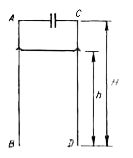
View SolutionTwo metal bars are fixed vertically and are connected on the top by a capacitor C. A sliding conductor of length land mass m slides with its ends in contact with the bars. The arrangement is placed in a uniform horizontal magnetic field directed normal to the plane of the figure. The conductor is released from rest. Find the displacement x(t) of the conductor as a function of time t.

View Solution
Knowledge Check
A conducting wire xy of lentgh l and mass m is sliding without friction on vertical conduction rails ab and cd as shown in figure. A uniform magnetic field B exists perpendicular to the plane of the rails, x moves with a constant velocity of
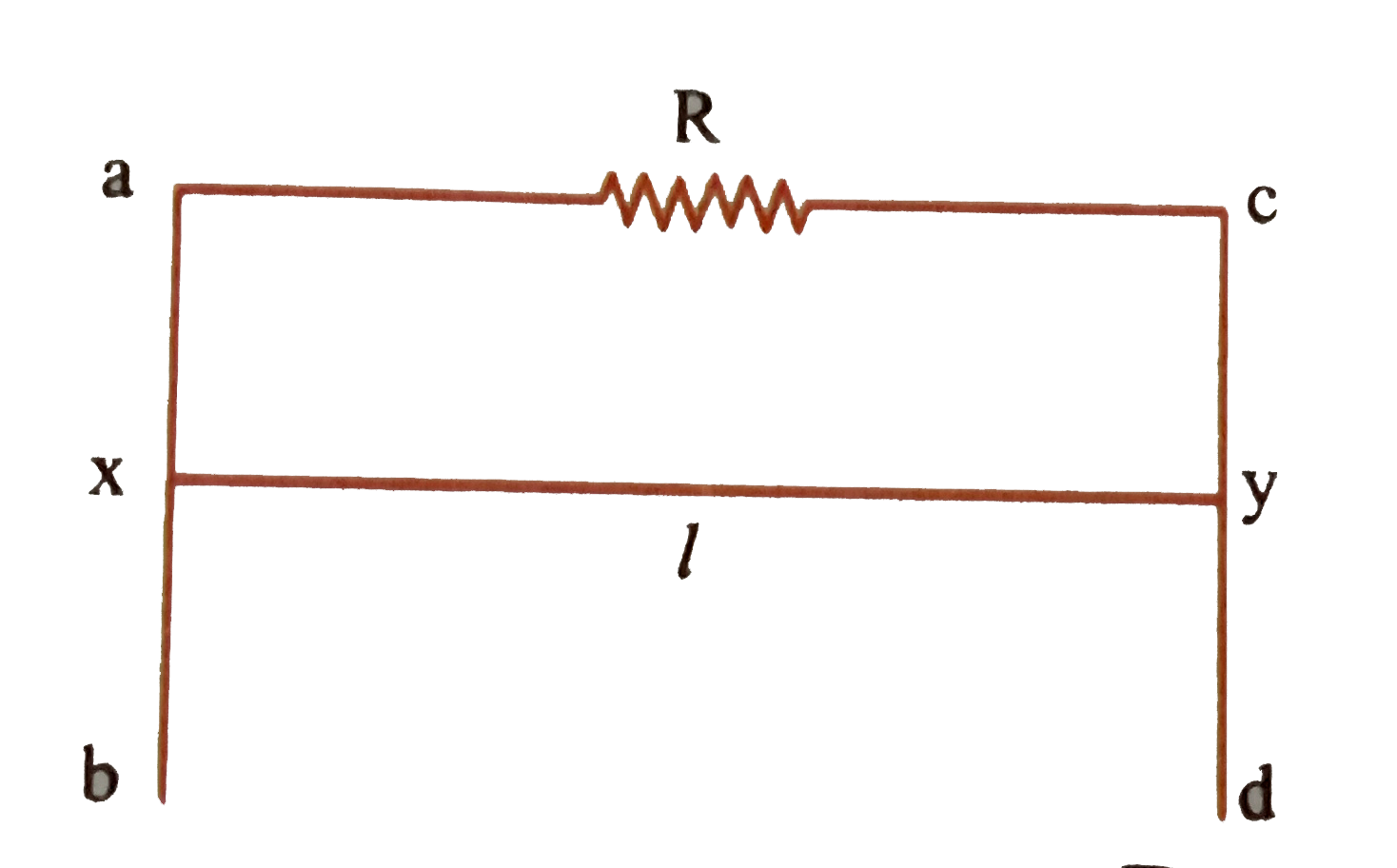 AmgRBlBmgRBl2CmgRB2l2DmgRB2l
AmgRBlBmgRBl2CmgRB2l2DmgRB2lA conducting wire of length l and mass m can slide without friction on two parallel rails and is connected to capacitance C. The whole system lies in a magnetic field B and a constant force F is applied to the rod. Then
Athe rod moves with constant velocityBthe rod moves with an acceleration of Fm+B2l2CCthere is constant charge on the capacitor.Dcharge on the capacitor increases with timeA conducting wire of length l and mass m can slide without friction on two parallel rails and is connected to capacitance C. Whole system lies in a magnetic field B and a constant force F is applied to the rod. Then
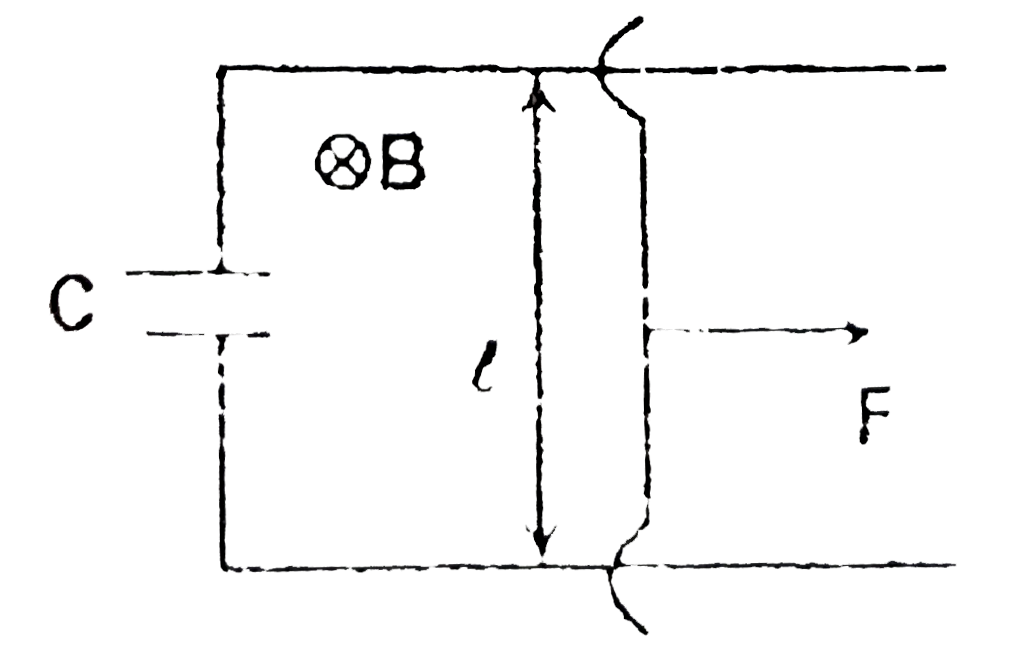 Athe rod moves with constant velocityBthe rod moves with an acceleration of Fm+B2l2cCthere is constant charge on the capacitor.Dcharge on the capacitor increases with time
Athe rod moves with constant velocityBthe rod moves with an acceleration of Fm+B2l2cCthere is constant charge on the capacitor.Dcharge on the capacitor increases with time
A loop (figure) is formed by two parallel conductores connected by a solenoid with inductance L and a conducting rod of mass m which can freely ( without friction) slide over the conductors. The conductors are located in a horizontal plane in a uniform vertical magnetic field with induction B. The distance between the conductors is equal to l. At the moment t=0 the rod is imparted an initial velocity υ0 directed to the right. Find the law of its motion x(t) if the electric resistance of the loop is negligible.

View SolutionA conducting wire of length l and mass m can slide without friction on two parallel rails and is connected to capacitance C. The whole system lies in amagnetic field B and a constant force F is applied to the rod . Then
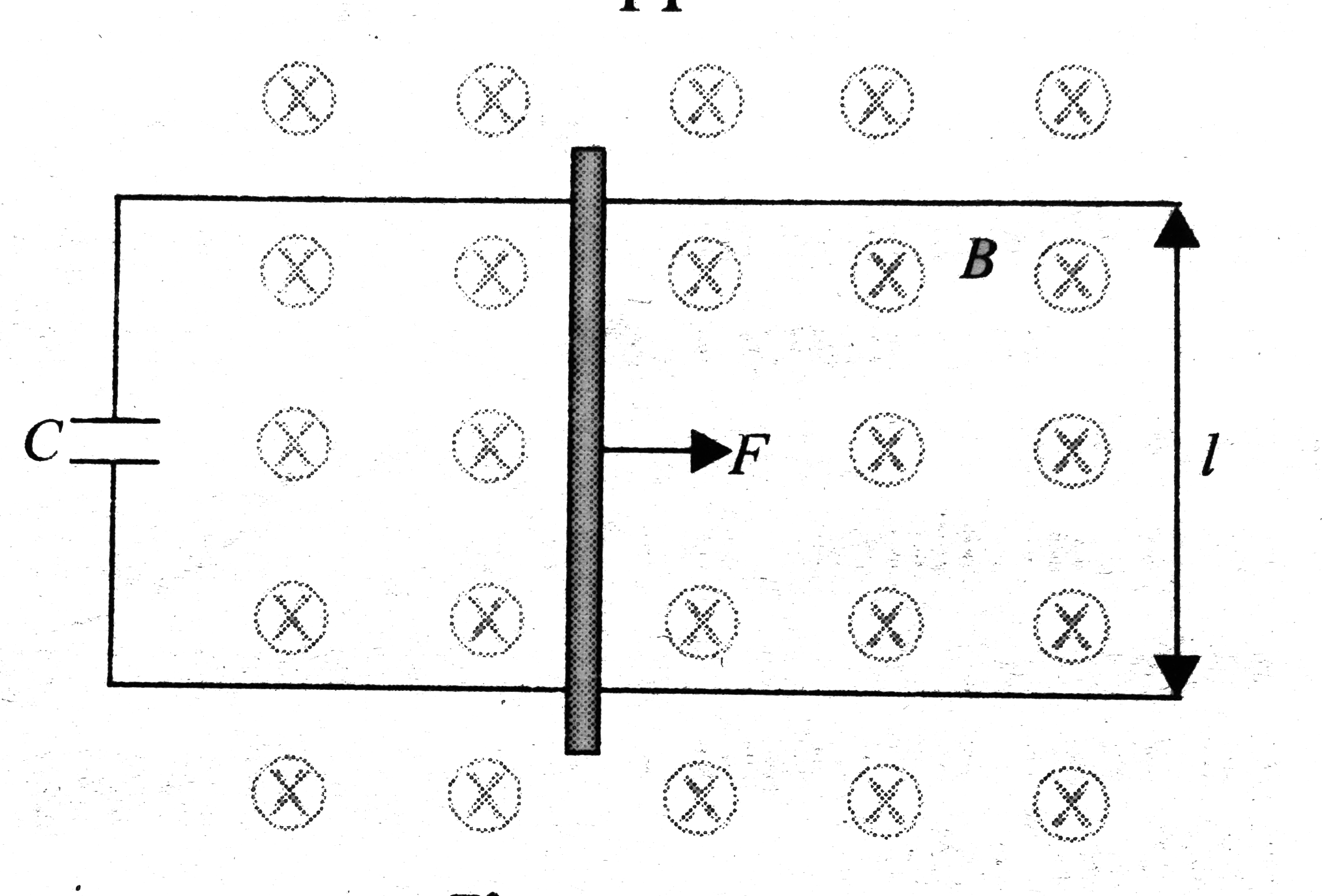
View SolutionA wire cd of length l and mass m is sliding without friction on conducting rails ax and by as shown. The verticle rails are connected to each other with a resistance R between a and b. A uniform magnetic field B is applied perpendicular to the plane abcd such that cd moves with a constant velocity of
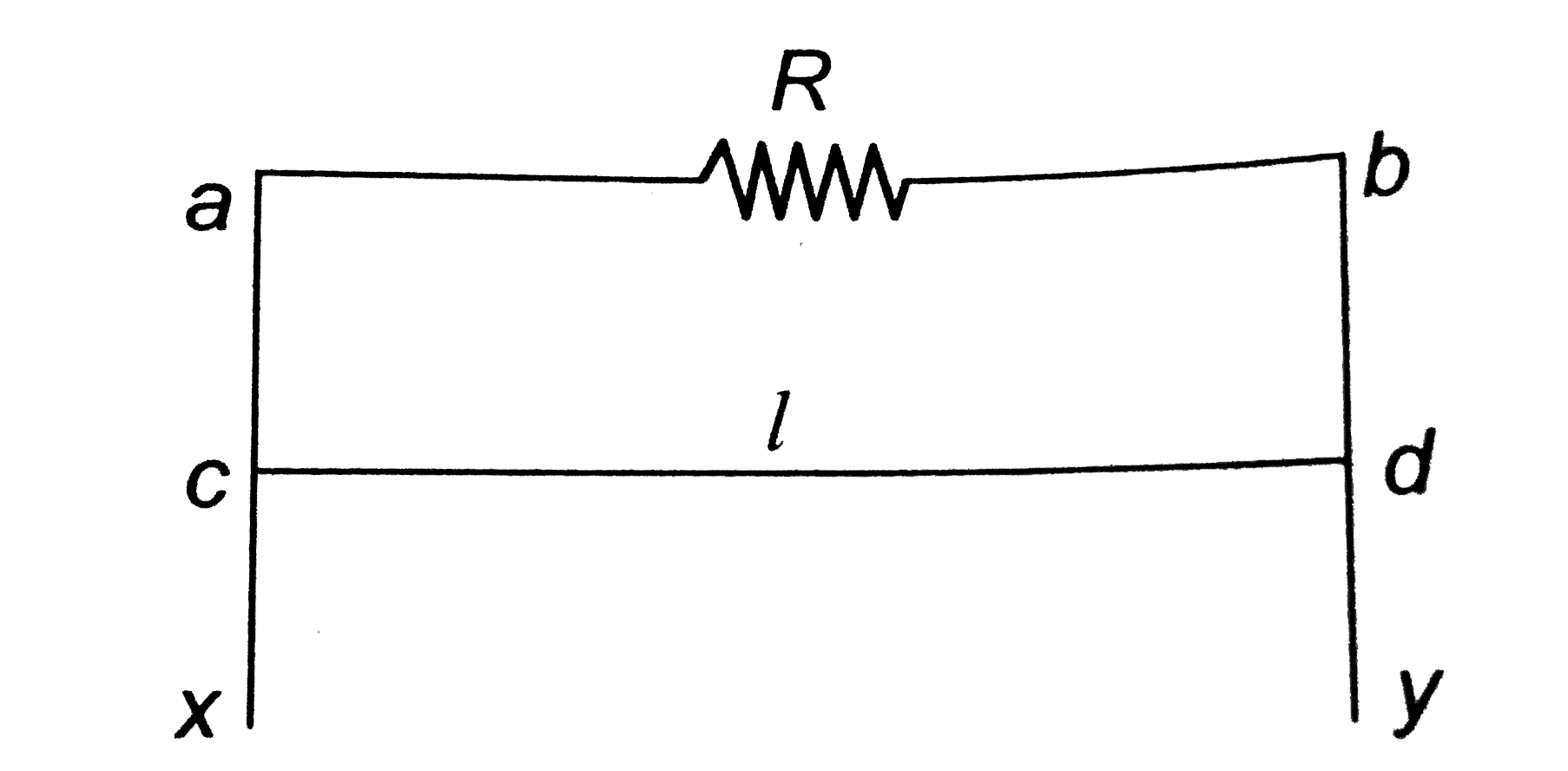
View SolutionA loop is formed by two parallel conductors connected by a solenoid with inductance L=2H and a conducting rod of mass m=80g, which can freely (without fricition) slide over the conductors. The conductors are located in a horizontal plane in a uniform vertical magnetic field with induction B=4T.
The distance between the conductors is equal to l=4cm. At the moment t=0 the rod is imparted an initial velocity v0=2cm/s directed to the right. Find the amplitude (in cm) for the oscillations of conducting rod, if the electric resistance of the loop is negligible.

View SolutionTwo parallel long straight conductors lie on a smooth plane surface. Two other parallel conductors rest on them at right angle so as to form a square of side a. A uniform magnetic field B exists at right angle to the plane containing the conductors. Now, conductors starts moving outward with a constant velocity v0 at t=0. Then, induced current in the loop at any time is (λ is resistance per unit length of the conductors)

View Solution
